March 30, 2024–Taipei, Taiwan
- mlchad147
- Apr 2, 2024
- 7 min read

Wowza, what a day. You can’t possibly see everything worth seeing in a new country in a single day, but we sure did try. As athletes are fond of saying, we didn’t leave anything in the locker room.
Taiwan, Republic of China, lies 112 miles off the coast of mainland China, but ideologically they’re as far apart as the Earth is from the moon. No need to go into all of that, as most people are aware of the geopolitical situation, though any tour of the island’s highlights will inevitably bring it to the fore.
Formerly known as Formosa, Taiwan is 245 miles long and 89 miles wide at its widest point. And here’s where we get into stuff you probably didn’t know. At least I didn’t before our visit. Taiwan is the world’s most mountainous country, with the largest number and density of high mountains in the world. There isn’t much flat land anywhere, and getting from point A to point B by car invariably makes one an admirer of the country’s tunnels. We experienced this first hand, as the port of Keelung, where we docked, is nearly an hour’s drive from Taipei, the capital, where we spent our day.
Taipei City, the capital’s administrative district, has a population of 2.5 million people, but greater Taipei, including Keelung, contains more than 7 million, nearly a third of the nation’s 25 million citizens. The first stop of our long day was a big one, or more accurately, a tall one, as we got up close and personal with Taipei 101, the world’s tallest building when it was completed in 2004. The skyscraper has (three guesses) 101 floors, with a luxury shopping mall on the bottom levels and observation decks on floors 88 and 89.
We were whisked from ground level to the 88th floor in an ear popping 37 seconds, quite an impressive feat. There we enjoyed a private reception with heavy snacks while we enjoyed the spectacular view of the city and surrounding mountains. I can’t imagine Taipei ever getting much bigger (though I suppose it could get taller), because the view showed that every inch of land that is even remotely close to being level has long since been developed.
As to the building itself, the coolest element is its damper, a massive 728 ton steel ball suspended between the 87th and 92nd floors, which can sway to counteract movement the building might experience during an earthquake or typhoon. The damper is visible in the center of the observation decks, and is really something to see. Taipei 101’s exterior is also unique, as it was designed to look like a series of stacked pagodas. I’ve never seen anything like it, certainly not on a skyscraper.
After the reception we went up to the 89th floor, which is open to the public and has a lot of displays, a hand puppet theater, coffee shop and gift shop. While I enjoyed it all, I spent most of my time at the windows, admiring the views. I took lots of photos, and I’ll post a couple below. Finally though it was time to leave, and the remarkable elevator plunged us back down to the mall in a ride that was both incredibly fast and silky smooth.
By now it was time for lunch, and our next stop took us outside the city proper to a landmark that was just as remarkable in its own way, the Grand Hotel. Established in 1952 and ultimately completed in 1968, the Grand Hotel is visually spectacular, being one of the world’s largest classical Chinese structures. The vivid red exterior, intricate balconies grand entranceway are truly eye popping. At one time was it was rated one of the world’s top ten hotels, and it’s easy to see why. The hotel once hosted President Eisenhower, and many other foreign dignitaries have stayed there as well.
The Grand Hotel puts on a grand lunch buffet, and not surprisingly the food was delicious. I will have to admit that I ate fairly quickly, so that I had more time to explore the place and take some photos. The dragon fountain on the second floor is especially impressive, and hopefully I got some nice photos. The bottom two floors also host several small gift shops, but I am absolutely certain that there is nothing in any of them that I could afford to buy.
From the hotel we traveled back into the city to the National Palace Museum, which is home to several hundred thousand artifacts that were originally housed in Beijing’s Forbidden City. When it became clear in 1949 that the Chinese Nationalists were going to lose the civil war to Mao’s communists, the Nationalists packed it all up and shipped it to Taiwan, where the best of the best is on public display.
The museum is massive, and you could easily spend a week there(time we obviously didn’t have), but our guide did a great job of directing us to the most important exhibits and explaining their history and significance. Some of the old jade, bronze and ceramic pieces truly are special, and I really enjoyed what I suppose would have to be considered a whirlwind visit.
One of the reasons we didn’t dwell at the museum was that we wanted to catch the changing of the guard at the Martyrs Shrine, one of Taipei’s most important sites. The Shrine is dedicated to the memory of the hundreds of thousands of Nationalist Chinese who died fighting the Japanese during World War Two, and subsequently the civil war that the Nationalists ultimately lost to Mao Zedung and the communists. The guard is changed hourly, and we were fortunate enough to arrive just in time to see the last one of the day. The ceremony is quite solemn, and moving when you consider all that it represents.
We still had one more stop to make, and like the Martyrs Shrine, this one is very meaningful to the Taiwanese. The Chiang Kai-shek Memorial Hall honors the man who is considered the founder of Nationalist China and who led the country in one way or another from 1928 until his death in 1975. The centerpiece of the Hall is a huge statue of a seated Chiang in a high ceilinged room at the top of 98 steps, one for each year of his life. Imagine a Chinese version of the Lincoln Memorial and you pretty well have it. There are a number of smaller rooms housing various exhibits, including Chaing’s state limousines and a recreation of his office with a wax figure of the leader seated at his desk.
The highlight, though, was the changing of the guard in front of the large Chiang statue, which they perform hourly, much as at the Martyrs Shrine. We joined a large crowd that had gathered for the last ceremony of the day, and watched respectfully as the immaculately uniformed soldiers acted out the ceremony with crispness and precision. Chiang is a controversial figure, even in Taiwan, with some considering him a great father figure who led them through difficult times, while others think of him as more of a dictator. Obviously the former opinion must constitute the majority view, because the Taiwanese government is clearly making a significant effort to honor Chiang’s memory. In any case, we considered the opportunity to visit the site and witness the changing of the guard to be incredibly special. How many Americans get to do that?
Our day still wasn’t over, though we were done in Taipei. Kudos to our bus driver, who made the hour long drive back to Keelung in less than that so we could re-board the ship in time for a 7:00 pm performance by a world renowned Chinese dance troupe. We’ve brought a lot of local groups on board during the cruise to do music and dances showing off their native cultures, but this one topped them all. Exquisite is the word I would use to describe the grace and elegance of these Chinese dancers, who deservedly received a thunderous standing ovation at the conclusion of the show.
Finally, after that we had a late dinner, then trudged back to our cabin for much needed showers. It was a long day, but a remarkable one in a country I never imagined that I would visit. There’s a lot of history here, and a lot of culture, and I cannot see how we could have experienced any more of it in a single day. At first glance Taipei appears to be a fairly ordinary city, but it certainly proved otherwise. If you ever get the chance to visit here, do it. You won’t be sorry.
Tomorrow we’ll add another country, I think our 22nd, when we visit Ishigaki, Japan. I can’t wait to see what new adventures await, and I’ll be sure to tell you all about them, so stay tuned.

Taipei 101, at one time the world’s tallest building.

We were entertained by dragons as we waited for the elevator.

View from the 88th floor. TheThe elevator whisked us up there in 37 seconds.
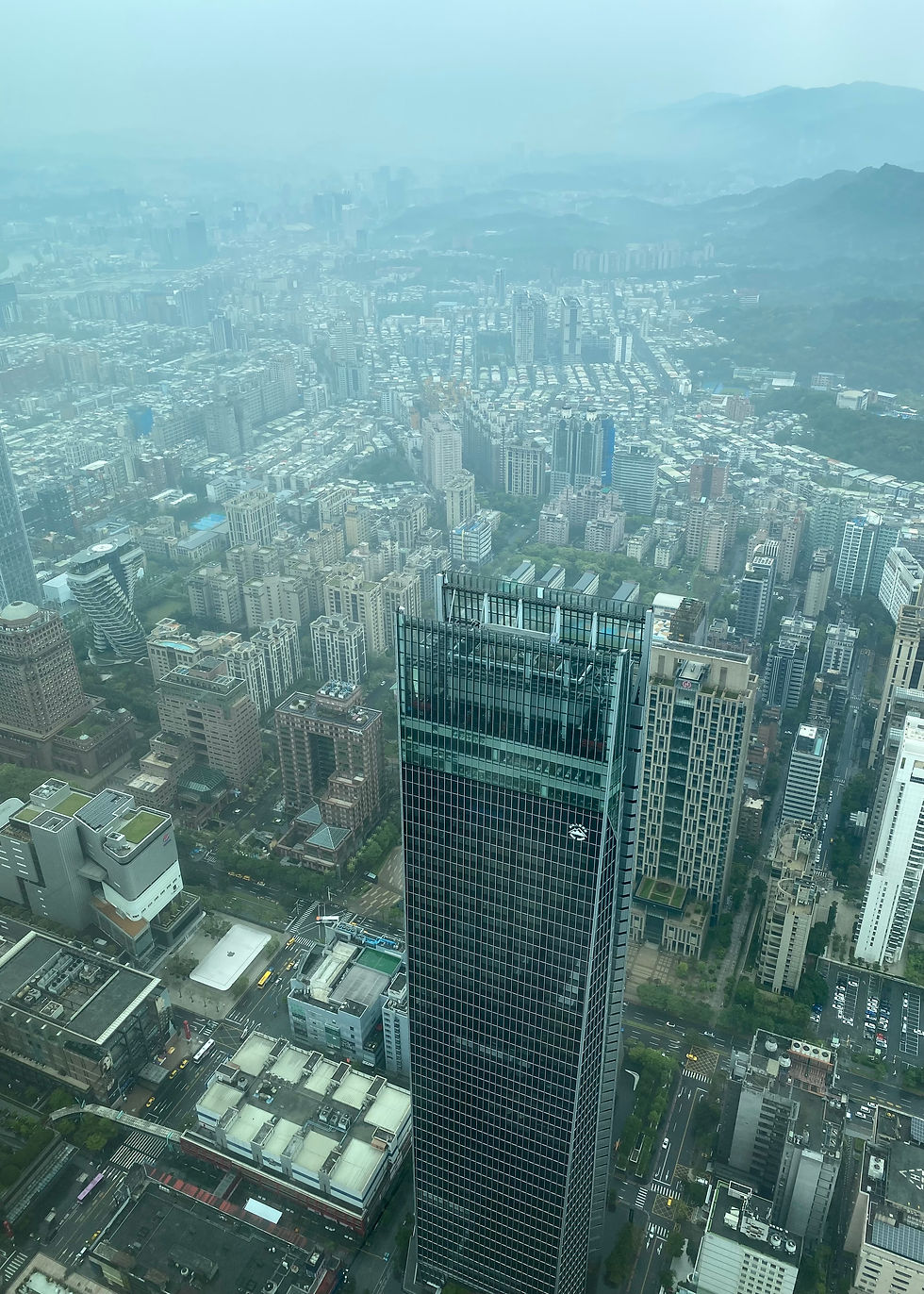
Another view from the 88th floor. Taipei takes up every inch of available flat land, and then some.

This is the revolutionary damper that made this tall building possible.
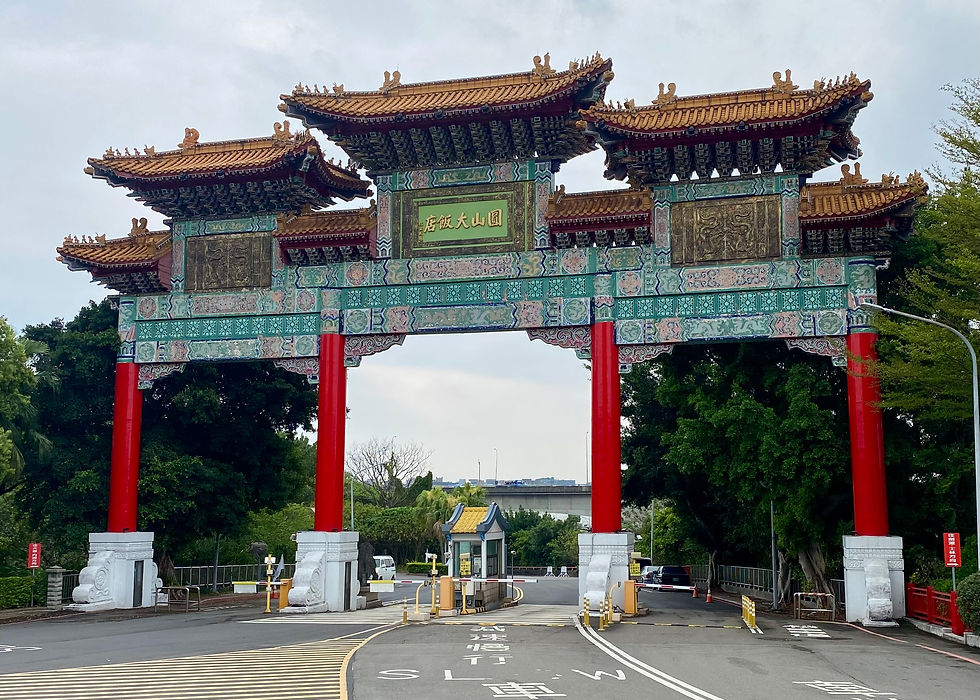
Off to the Grand Hotel for lunch. This is the gateway.

The Grand Hotel as you approach from the gateway.

The portico ceiling is breathtaking, and get a load of those balconies.

Uniformed attendant directing traffic under the portico.

Inside the lobby greeters wearing sashes welcome you to the hotel.
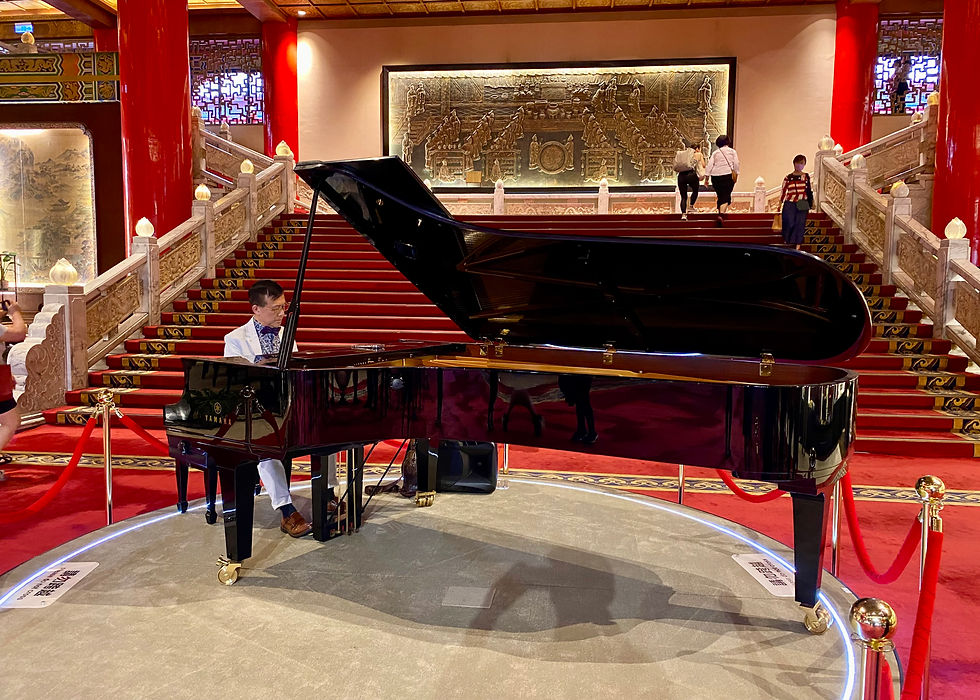
Classical music in the lobby.

One more photo of the lobby. Pretty spectacular.

Dragon fountain up on the hotel mezzanine.

The National Palace Museum has thousands of wonderful pieces. I wish I had space to show you more of them.

I can show you a few. Beautiful, isn’t it.

Dragon plate.

You could spend a week at the Museum.

Changing of the guard at the Martyrs Shrine. Very impressive.

One of the guards at the Martyrs Shrine.

The Chiang Kai-shek Memorial Hall. 89 steps, one for each year of his life.

The main area is very reminiscent of the Lincoln Memorial.

There are other displays here too. This is a reproduction of Chiang’s office.

Chiang’s official state limosines.
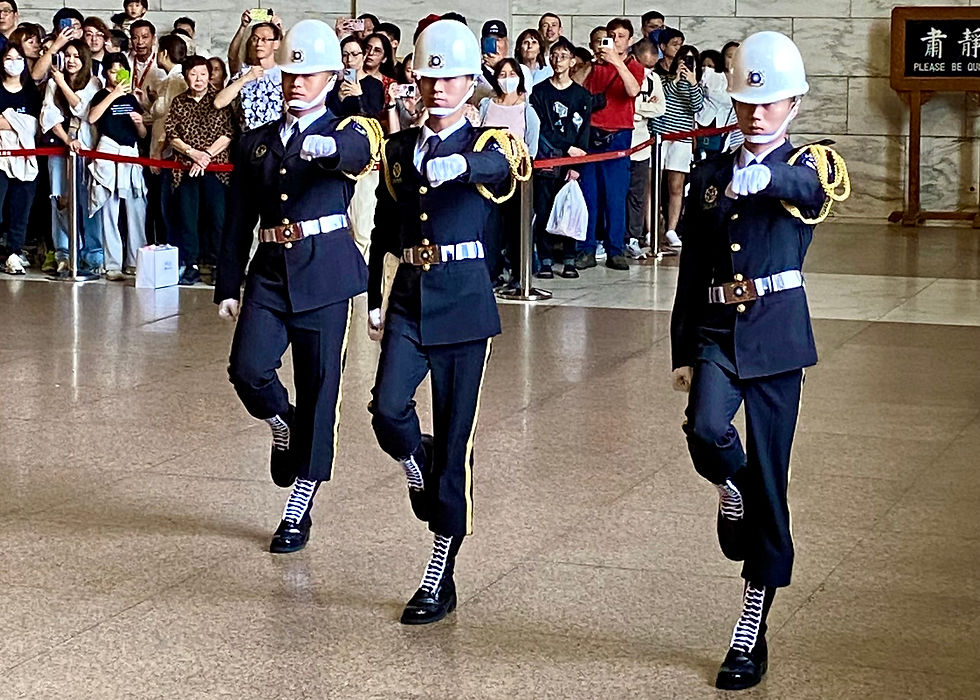
They change the guard hourly here too.
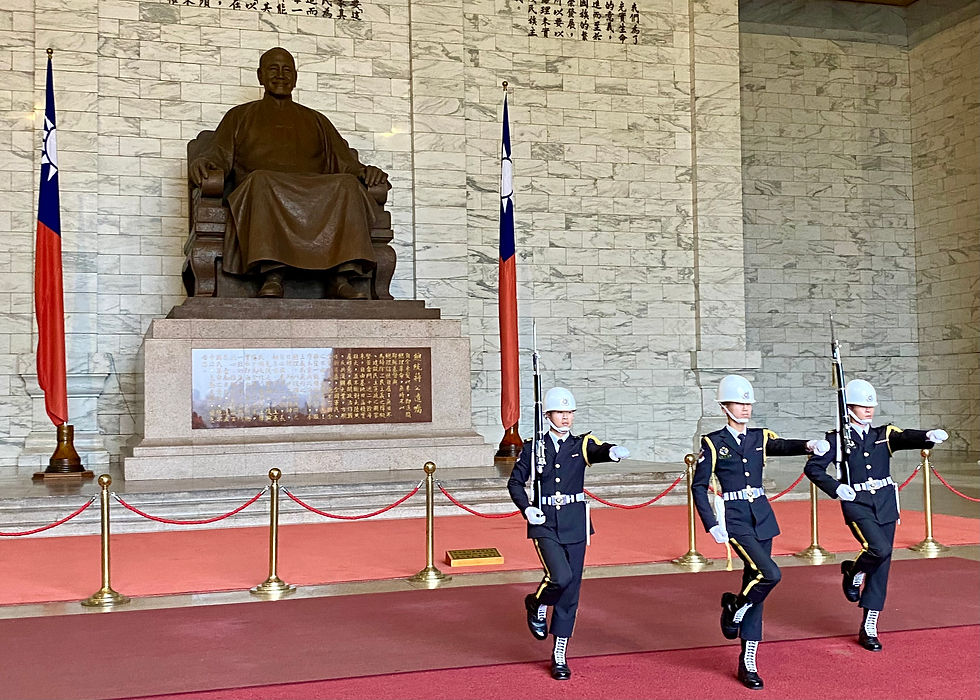
The ceremony was quite moving.

Truly wonderful performance by Taiwanese dancers back on the ship in the evening. Great ending to a great day.


